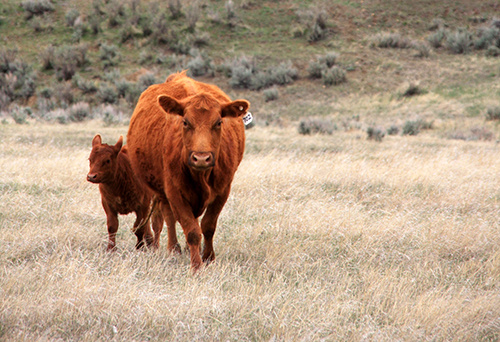 “To me, the most important part of conservation is the mechanism it provides to teach my three children a mindset,” Ryan Fieldgrove said. “Conservation is about solving problems, utilizing existing resources, sacrifice, and hard work. These are all things that are important for my children to see in action.
“To me, the most important part of conservation is the mechanism it provides to teach my three children a mindset,” Ryan Fieldgrove said. “Conservation is about solving problems, utilizing existing resources, sacrifice, and hard work. These are all things that are important for my children to see in action.
The Fieldgroves’ primary stewardship practice was the incorporation of goats into their operation in an effort to battle the family’s long-time nemesis … the Leafy Spurge. The goats are part of an Integrated Pest Management (IPM) system that includes Flea Beetles, which feed on the Leafy Spurge. The system has been so successful that the weed has virtually been eliminated on most of the ranch.
Another stewardship strategy the Fieldgroves utilized was the reduction of their stocking rate to combat the years of drought they have experienced. Ryan and Teresa have discovered that the reduced amount of cattle has improved range conditions and benefited wildlife. In addition, the family has reduced their goat herd. Goats can be harsh on terrain and lead to erosion in certain areas, but the Fieldgroves’ ranch shows no sign of erosion from the goats. A third major conservation practice on Fieldgrove Ranch is the family’s participation in a sage-grouse habitat improvement program. The Fieldgroves turned four pastures into eight, allowing for rotational grazing. They also stay out of the sage-grouse leks during breeding times. The program includes pasture aeration, which allows for native forage to overcome areas of cheat grass infestation, and the development of suitable plant life for the sage-grouse’s diet.“Ryan is a progressive, innovative, and committed operator,” wrote John Pearson, Lake DeSmet Conservation District, in his letter of recommendation. “He wishes to educate his children in good conservation practices, so they have the same opportunity he experienced with being ‘raised on the ranch.’
 Sign In
Sign In
 Sign In
Sign In
